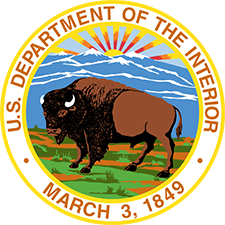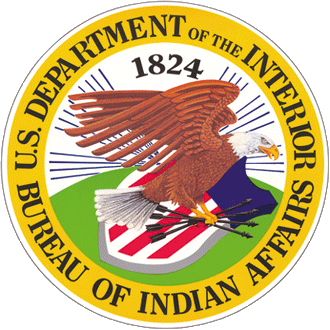Most activities or project proposals that use, develop, or repurpose resources on American Indian and Alaska Native trust or restricted lands require NEPA compliance. “Trust land” refers to a land interest owned by a Tribe or an individual Indian landowner in which the title is held in trust by the United States and there are legal restrictions on how the land can be sold or transferred. “Restricted land” is a land interest owned by a Tribe or an individual Indian landowner that has legal restrictions on how the land can be sold or transferred.
Activities and projects that require NEPA compliance may include but are not limited to:
- Infrastructure development such as construction of roadways and right-of-way easements, drinking water or irrigation projects, power lines, and broadband internet projects;
- Permit applications for activities such as livestock grazing and energy and mineral development;
- Realty transactions such as lease acquisitions, gift deeds, and fee-to-trust land acquisitions; and
- Environmental restoration projects.
To learn whether your project requires NEPA compliance or how to initiate a NEPA compliance review request for your activity or project, or for questions about a NEPA compliance review request you have already initiated, contact the Regional Environmental Scientist that corresponds with your activity or project’s region. The Regional Environmental Scientist will direct you to a regional NEPA professional or to the appropriate agency.
Proper planning and communication with a NEPA professional in your activity or project’s region can help ensure that you have the supporting documentation required for your NEPA compliance review request. Complete and correct documentation will help ensure that your NEPA compliance review request is processed as quickly as possible.
Prepare to Speak with a NEPA Professional
If you would like to speak to a NEPA professional and have not yet initiated a NEPA compliance review request, gather all available information about your activity or project before your consultation. This includes but is not limited to:
- A detailed activity or project description;
- Site map with your activity or project area indicated;
- GPS coordinates in decimal degrees of your activity or project area;
- Legal surveys, if applicable;
- Photographs;
- Tribal authorization;
- Land status; and
- Previous NEPA environmental assessments, if applicable.
Contact Your Regional Environmental Scientist
To speak with a NEPA professional, contact the environmental professional corresponding to your project’s region as listed in the table below.
| BIA Region | Regional Environmental Scientist | Phone | |
|---|---|---|---|
| Alaska | Harrilene Yazzie | Harrilene.Yazzie@bia.gov | (907) 271-4004 |
| Eastern | Keith Bluecloud | Keith.BlueCloud@bia.gov | (615) 564-6836 |
| Eastern Oklahoma | Mosby Halterman | Mosby.Halterman@bia.gov | (918) 781-4660 |
| Great Plains | Mark Herman | Mark.Herman@bia.gov | (605) 226-7656 |
| Midwest | Chelsa Johnson | Chelsa.Johnson@bia.gov | (612) 476-2994 |
| Navajo | George Padilla | George.Padilla@bia.gov | (505) 863-8434 |
| Northwest | Brian Haug | Brian.Haug@bia.gov | (503) 231-6753 |
| Pacific | Felix Kitto | Felix.Kitto@bia.gov | (916) 978-6147 |
| Rocky Mountain | Melissa Passes | Melissa.Passes@bia.gov | (406) 247-7911 |
| Southern Plains | David Anderson | David.Anderson@bia.gov | (405) 247-1532 |
| Southwest | Donna Kraidy | Donna.Kraidy@bia.gov | (505) 563-3423 |
| Western | John Krause | John.Krause@bia.gov | (602) 379-3723 |
What to Expect When Speaking with a NEPA Professional
If you would like assistance in determining whether your activity or project requires NEPA compliance, the NEPA professional you speak to may help you answer questions such as:
- Does your activity or project include a proposed federal action that must be initiated, funded, permitted, or approved by the Bureau of Indian Affairs (BIA)?
- Will the proposed action have effects that can be measured?
- Is the proposed action exempt from NEPA?
If NEPA compliance is required, the NEPA professional may further help you answer questions that determine the level of review and supporting documentation required for your activity or project, such as:
- Are significant environmental effects expected to result from the proposed federal action?
- Does the proposed federal action belong in a category that is excluded from NEPA review?
- If the proposed federal action is categorically excluded, are there extenuating circumstances which require it to be reviewed?
- Is there existing NEPA documentation for your proposed action that you may include in your compliance review request?
The NEPA professional may also help you determine whether local, federal, and Tribal agencies must be contacted to complete your project.
Additional Information
Related Pages
- Rights-of-Way on Individually Owned Indian and Tribal Lands
- Leasing on Individual Indian and Tribal Lands
- Fee to Trust Land Acquisitions
- BIA Fee to Trust Handbook
- Natural Resource Damage Assessment and Restoration Program in Indian Country
- 40 Most Asked Questions Concerning CEQ’s NEPA Regulations
- NEPA.gov
- Federal Register Notice: Final NEPA Procedures
- 516 DM 10: Managing the NEPA Process - Bureau of Indian Affairs
- 59 IAM 3-H: Indian Affairs NEPA Guidebook
Contact Us
Albuquerque, NM 87104


